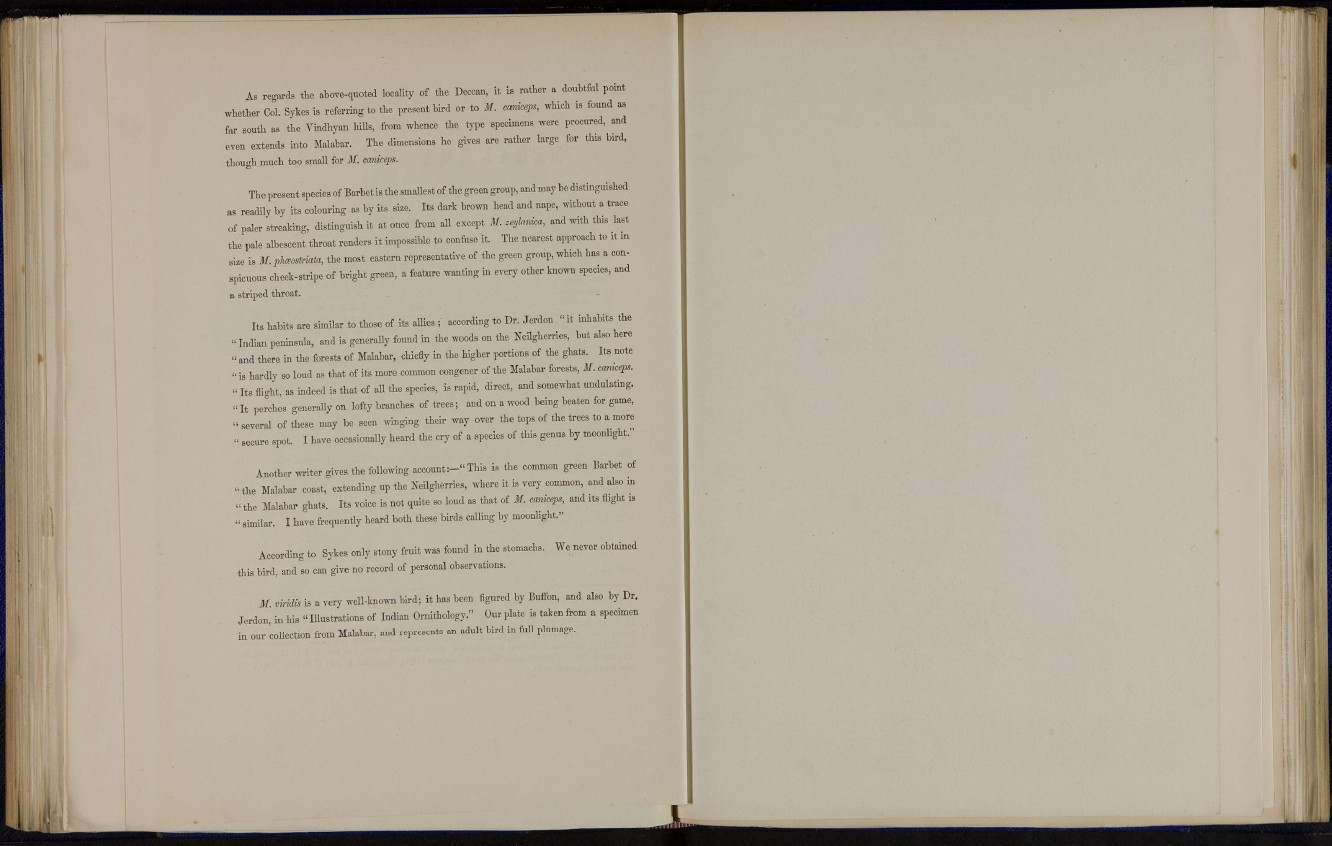
As regards the above-quoted locality of the Deccan, it is rather a doubtful point
whether Col. Sykes is referring to t h e present bird or to M. caniceps, which is found as
far south as the Vindhyan hills, from whence the type specimens were procured, and
even extends into Malabar. The dimensions he gives are rather large for tliis bird,
though much too small for M. caniceps.
The present species of Barbet is t h e smallest of t h e green group, and may be distinguished
as readily by its colouring as b y i t s size. Its dark brown head and nape, without a trace
of paler streaking, distinguish it at once from all except M. seylanica, and with this last
the pale albescent throat renders it impossible to confuse it. The nearest approach to it in
size is M. phaostriaia, the most eastern representative of the green group, which has a conspicuous
cheek-stripe of bright green, a feature wanting in every other known species, and
a striped throat.
I t s habits are similar t o those of its allies ; according t o Dr. Jerdon " i t inhabits the
" Indian peninsula, and is generally found in the woods on the Neilgherries, but also here
" and there in the forests of Malabar, chiefly in the higher portions of the ghats. Its note
" is hardly so loud as that of its more common congener of the Malabar forests, M. caniceps.
" I t s flight, as indeed is t h a t of all the species, is rapid, direct, and somewhat undulating.
" It perches generally on lofty branches of t r e e s ; and on a wood being beaten for game,
" several of these may be seen winging their way over the tops of the trees t o a more
" secure spot. I have occasionally h e a r d the cry of a species of this genus by moonlight."
Another writer gives the following account:—"This is the common green Barbet of
" the Malabar coast, extending up the Neilgherries, where it is very common, and also in
" the Malabar ghats. Its voice is not quite so loud as that of M. caniceps, and its flight is
" similar. I have frequently heard both these birds calling by moonlight."
According t o Sykes only stony fruit was found in the stomachs. We never obtained
this bird, and so can give no record of personal observations.
M. viridis is a very well-known bird; it has been figured by Buffon, and also by Dr.
Jerdon, in his " I l l u s t r a t i o n s of Indian Ornithology." Our plate is taken from a specimen
in our collection from Malabar, and represents an adult bird in full plumage.